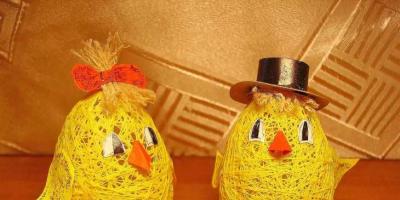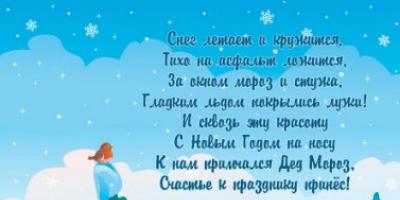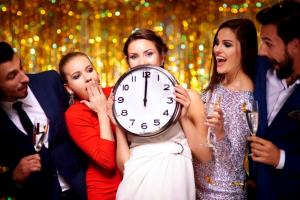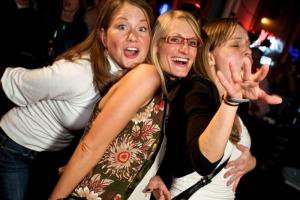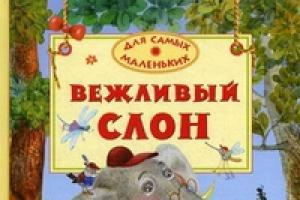Catholics and Protestants who live according to the Gregorian calendar, as well as local Orthodox churches of the world who adhere toNew Julian calendar, celebrate the Feast of the Nativity of Christ on the night of December 24-25.
Christmas is one of the most important Christian holidays, established in honor of the birth of the baby Jesus Christ in Bethlehem. Christmas is celebrated in many countries around the world, only the dates and calendar styles (Julian and Gregorian) differ.
The Roman Church established December 25 as the date of celebration of the Nativity of Christ after the victory of Constantine the Great (approx. 320 or 353). Already from the end of the 4th century. the entire Christian world celebrated Christmas on this day (with the exception of the eastern churches, where this holiday was celebrated on January 6).
And in our time, Orthodox Christmas “lags” behind Catholic Christmas by 13 days; Catholics celebrate Christmas on December 25, and Orthodox Christians on January 7.
This was due to a mix-up of calendars. The Julian calendar came into use in 46 BC Emperor Julius Caesar, adding one more day in February, was much more convenient than the old Roman one, but still turned out to be insufficiently clear - the “extra” time continued to accumulate. For every 128 years, one unaccounted day accumulated. This led to the fact that in the 16th century one of the most important Christian holidays - Easter - began to “arrive” much earlier than expected. Therefore, Pope Gregory XIII undertook another reform, replacing the Julian style with the Gregorian one. The purpose of the reform was to correct the growing difference between the astronomical year and the calendar year.
So in 1582 In Europe, a new Gregorian calendar appeared, while in Russia they continued to use the Julian calendar.
The Gregorian calendar was introduced in Russia in 1918, however, the church did not approve of such a decision.
In 1923 On the initiative of the Patriarch of Constantinople, a meeting of the Orthodox Churches was held, at which a decision was made to correct the Julian calendar. Due to historical circumstances, the Russian Orthodox Church was unable to take part in it. Having learned about the meeting in Constantinople, Patriarch Tikhon nevertheless issued a decree on the transition to the “New Julian” calendar. But this caused protests among the church people and the decree was canceled less than a month later.
Together with the Russian Orthodox Church, on the night of January 6-7, the Feast of the Nativity of Christ is celebrated by the Georgian, Jerusalem and Serbian Orthodox Churches, Athos monasteries living according to the old Julian calendar, as well as many Catholics of the Eastern rite (in particular, the Ukrainian Greek Catholic Church) and some Russian Protestants.
All the other 11 Local Orthodox Churches of the world celebrate the Nativity of Christ, like Catholics, on the night of December 24-25, since they do not use the “Catholic” Gregorian calendar, but the so-called “New Julian” calendar, which still coincides with the Gregorian calendar. The discrepancy between these calendars in one day will accumulate by 2800 (the discrepancy between the Julian calendar and the astronomical year in one day accumulates over 128 years, the Gregorian - over 3 thousand 333 years, and the "New Julian" - over 40 thousand years).
Christmas is one of the main Christian holidays, established in honor of the birth in the flesh (incarnation) of Jesus Christ. The Roman Catholic Church and most Protestant churches celebrate Christmas according to the Gregorian calendar - on the night of December 24-25.
The decision to celebrate the Nativity of Christ on December 25 was made at the Ephesus (Third Ecumenical) Church Council in 431.
Christmas is preceded by the Advent period. During Advent, believers participate in special pre-Christmas services and try to perform acts of mercy. During the four weeks of Advent, it is necessary to prepare for confession in order to participate in Christmas services and receive Communion with a pure heart.
A detailed account of the birth of Jesus Christ is given only by the Evangelist Luke: “Joseph also went from Galilee, from the city of Nazareth, to Judea, to the city of David, called Bethlehem, because he was from the house and family of David, to enroll with Mary, who was betrothed to him woman who was with child. And while they were there, the time came for her to give birth; and she gave birth to her firstborn Son, and wrapped Him in swaddling clothes, and laid Him in a manger, because there was no room for them in the inn."
The reason why Mary and Joseph went to Bethlehem was a census conducted during the reign of Emperor Augustus during Quirinius's administration of Syria. According to the emperor's decree, every resident of the Roman Empire had to come “to his city” to facilitate the census. Since Joseph was a descendant of David, he headed to Bethlehem.
After the birth of Jesus, the first of the people to come to worship him were the shepherds, notified of this event by the appearance of an angel. According to the Evangelist Matthew, a miraculous star appeared in the sky, which led three wise men (wise men) to the baby Jesus. They presented Christ with gifts - gold, frankincense and myrrh; at that time the holy family had already found shelter in a house (or perhaps in a hotel).
Upon learning of the birth of Christ, King Herod of Judea ordered the death of all infants under the age of two, but Christ was miraculously saved from death. However, Joseph's family was forced to flee to Egypt and remained there until the death of King Herod.
According to the Roman tradition that developed in the first centuries of Christianity, on Christmas Day, December 25, three special liturgies are celebrated - mass at night, mass at dawn and mass during the day. Thus, Christmas is celebrated three times - as the pre-eternal birth of the Word from God the Father (at night), the birth of God the Son from the Virgin (at dawn) and the birth of God in a believing soul (during the day). In the evening of Christmas Eve, Christmas Eve Mass is celebrated.
At the beginning of the first of the Christmas Masses, a procession takes place, during which the priest carries and places a figurine of the Infant Christ in the manger and sanctifies it. This helps believers feel like participants in the event that happened on Christmas night.
The Christmas celebration lasts eight days - from December 25 to January 1 - forming the Octave of Christmas. On December 26, the feast of the holy martyr Stephen falls, on December 27, the memory of the holy apostle and evangelist John the Theologian is celebrated, on December 28, the Innocent Infants of Bethlehem. On a Sunday falling on one of the days from December 26 to 31, or December 30 if a Sunday does not fall on these days in a given year, the Feast of the Holy Family is celebrated: the Child Jesus, Mary and Joseph. January 1 marks the Solemnity of the Blessed Virgin Mary.
Christmas time continues after the end of the Octave until the Feast of Epiphany, which in the Roman Catholic calendar is celebrated on the first Sunday after Epiphany (January 6). During the entire Christmas season, the clergy at the liturgy wear white, festive attire.
For Christmas dinner, most people in Italy and the Vatican serve roast panettone, a panettone Christmas cake similar to Easter, or a fluffy cake from Verona called pandoro. At Christmas, these countries give each other Torroncino - delicacies similar to nougat and grilled meat.
In Germany, there are traditional regional types of Christmas pastries - Nuremberg gingerbread, Aachen gingerbread, Dresden Christmas cake, cinnamon stars.
In many European countries, the holiday table traditionally includes a sweet Christmas log - a sponge roll richly decorated with cream, icing and chocolate.
One of the main symbols of Christmas is lit candles. The flickering flame of a candle reminds believers of the gospel words: “The light shines in the darkness, and the darkness has not overcome Him.”
Christmas reveals Christ to believers in the form of a small child surrounded by the Holy Family; this holiday is celebrated with family and is warmed with special warmth and mutual love.
The material was prepared based on information from open sources
On the twenty-fifth of December, Catholics around the world celebrate their main holiday -. They pay tribute to him and the Virgin Mary, congratulating relatives and friends on the birth of the savior. This holiday has now become a national holiday in many countries, and everyone celebrates it almost equally.
The fast before Christmas for Catholics is not as strict as for Orthodox Christians, the main thing is not to eat meat. Only on the last day - only the juiced grains, boiled with honey, are eaten. According to tradition, you cannot eat on this day until the first star. There are still many customs that have been preserved from the past.
Celebrating Catholic Christmas
Let's look at how Catholics celebrate Christmas. What do they usually do on this holiday?
- The four weeks before Christmas are called Advent. This is a period of purification through prayer and going to church, decorating the home and preparing gifts for loved ones.
- One of the symbols of Catholic Christmas is wreaths made of fir branches, decorated with four candles, one of which is lit every Sunday before the holiday.
- Gospel readings are held in the church, and believers confess. And before the holiday itself, a manger with figurines of the Virgin Mary, Jesus and the Magi is installed. Many homes also arrange such compositions showing the Birth of the Savior.
- When celebrating Christmas, it is customary for Catholics to attend mass - a festive service in the church. During it, the priest places a figurine of Jesus Christ in a manger and sanctifies it, which allows people to feel like participants in ancient sacred events.
- The festive dinner is different in all Catholic countries, for example, in England it is a traditional roast turkey, in Latvia it is carp, and in Spain it is suckling pig. But the main thing is that the table should be richly set so that the whole year will be happy.
It is very interesting to know how Catholics celebrate Christmas, because, despite the differences in the culture of different countries, they use common customs. And all Catholics maintained a reverent attitude towards the meaning of the holiday.
Every year on December 25, all Catholics and representatives of some other religious denominations celebrate Christmas. For them, this holiday is more significant than the New Year, so they begin to prepare for it a month in advance - both at the church and at the secular level. It is precisely for Christmas, and not New Year’s celebrations, that colorful bazaars are timed, many dishes that have already become traditional are invented, and most importantly, special temple services are held for four weeks.
Today the site tells about the history of Catholic Christmas, its main traditions and facts related to this holiday.
History of Catholic Christmas
Who and when decided that Jesus Christ was born on December 25 is not known for certain - the Bible does not contain any indications of the specific day and month of the Savior’s birth. But it is known that Pope Julius I approved the date of Christmas celebration by decree in 337.
There is a version that during the period of early Christianity, Christmas became a replacement for the annual holiday dedicated to the birth of the sun god Mithras and the winter solstice. Based on the fact that almost all religious Christian holidays are, in fact, a substitute for pagan festivals, we can conclude that the date of Christmas was not calculated from some ancient books, but was simply “assigned” to facilitate the formation of a new religion.
The very first documentary mention of the date of Christmas is found only in the middle of the 4th century AD, in a Roman almanac, in which the first line in the list of martyrs and bishops is: on December 25, Jesus was born from Bethlehem of Judea.
Over time, Christmas has acquired traditions and rituals, many of which have survived to this day almost in their original form, but some have undergone significant changes. For example, Christmas trees (Christmas trees) and the tradition of giving gifts did not previously exist.
Then, in memory of the gifts of the Magi to the baby Jesus, people began to exchange souvenirs, and the tradition of decorating the Christmas tree became a symbiosis of various ancient cults, echoes of which survived even after the final formation of Christianity. The Germanic peoples played an important role in the appearance of the Christmas tree. Thus, the holiday acquired secular features and ceased to be purely religious.
Speaking about history, it is perhaps worth mentioning that before Russia switched to a new style of timekeeping, Orthodox Christians also celebrated Christmas on December 25, that is, this holiday was the same for both faiths.
Traditions of Catholic Christmas
Advent
Catholic Christmas is preceded by about four weeks of Advent, the period when Catholics prepare for the holiday. At this time, believers fast, pray, and try to do only good deeds. Children are given hearts and bundles of straw for good deeds - they then hang the paper hearts on the Christmas tree, and put the straw in the Christmas crèche.
Every Sunday of Advent, thematic services are held, and in churches and in homes it is customary to place Christmas wreaths in which 4 candles are fixed - they are lit one at a time - also on Sundays.
Christmas nativity scene
Another centuries-old tradition is the installation of a nativity scene or manger. At first they were installed only in churches and reflected the first minutes from the birth of Jesus Christ. The figurines were made of wood, clay or wax and dressed in simple clothes. Later, nativity scenes and nurseries began to be installed in homes.
Catholic Christmas: history, traditions, facts
Now nativity scenes are usually richly decorated. The Virgin Mary, Joseph and the Magi are dressed in luxurious outfits, and the cave itself is decorated with greenery. All Christmas markets sell a huge number of a wide variety of nativity scenes, made both by hand and in production. Some countries even hold competitions for the best nativity scene, and there are museums dedicated to this topic.
Traditions of Catholic Christmas (continued)
The beginning of the celebration
Celebrating Catholic Christmas begins on December 24th. On this day, believers go to church to go to confession, receive communion and receive blessings. Returning from church, Catholics begin decorating the Christmas tree, setting up a nativity scene or manger, and preparing pre-holiday and holiday treats.
According to tradition, on Christmas Eve you cannot eat until the first star, and then Lenten dishes are placed on the table. The central place is occupied by a plate with wafers (unleavened bread), which all those present pass to each other with wishes for peace, goodness and God's grace. In addition, porridge, jelly, and sometimes fish and sweet buns or cookies are served for the evening meal.
Catholic Christmas: history, traditions, facts
On Christmas Eve, one seat at the table is traditionally left unoccupied. This symbolizes the readiness of Christians to accept anyone who comes as a brother in faith, to feed and warm them. In some countries, an empty seat also serves as a reminder of the deceased, as well as of those relatives who, for some reason, were unable to attend the pre-holiday dinner.
Christmas celebration
At midnight, the Christmas Mass begins, after which Catholics exchange gifts and begin directly celebrating Christmas. The series of Christmas celebrations lasts eight days - from December 25 to January 1 of the following year. During this time, all kinds of performances take place, and scenes based on biblical tales are played out on the streets.
Christians celebrate Christmas all over the world. But why the holiday divided believers into two communities that celebrate Catholic Christmas on December 25 and the birth of Christ on January 7, and what the holiday has in common and special among Christians of the Eastern and Western rites - journalists from the website "24" looked into it.
Christmas is one of the most important Christian holidays, which is celebrated on December 25 by Catholics, and two weeks after that by Christians of the Eastern rite.
Christmas marks the birth of Jesus Christ, who, according to Christian beliefs, was sent by God into the world to save humanity. It was this day that divided history into “before” and “after” - with the birth of Christ, the modern calendar called “our era” began.
Christmas has a long history with unique traditions and customs - people decorate Christmas trees, prepare festive dishes, sing carols, go to church and visit relatives.
Christmas is one of the most important Christian holidays, celebrated around the world on December 25 and January 7
Western Christmas traditions
Christmas for Catholics and Protestants is a special and important religious holiday. On the eve of Christmas, people adhere to Advent - a time in anticipation of the holiday, when people pay special attention to spiritual life, some, if desired, adhere to fasting.
The holiday unites the whole family, who reverently decorate the house for Christmas - this symbolizes faith and veneration of Jesus. Among the symbols of this holiday, a special place is occupied by the Christmas tree, as well as the Christmas wreath, mistletoe, straw and gifts.
On the evening of December 24, when the first star appears in the sky, families gather for a Holy Supper of Lenten dishes: fish, platok (lenten bread), fruits, nuts and other things. Before the meal begins, the head of the family reads a passage from the Gospel, the family sings the first carol, then everyone breaks the Christmas bread - the scarf.
Ukrainian carol "Shchedrik" became a world-famous hit called "Carol of the Bells" - video
After dinner, the family gathers at the temple for the Christmas Eve Mass, which symbolizes the unity of the Father and the Son. Mass usually begins at midnight. During it, the priest places a figurine of the baby Jesus in the nativity scene.
The second festive mass takes place at dawn and symbolizes the time of the birth of a new life from the mother’s womb. And the third mass, which takes place during the day, brings the symbol of the birth of Jesus into the hearts of all believers.
On December 25, holiday food is served. The main dish of the table for most Catholics and Protestants is baked turkey, duck, pork, etc.

Children expect gifts from Santa Claus on December 25
Traditions of celebrating Christmas of the Eastern rite
Orthodox and Greek Catholics celebrate the Birthday of Christ on January 7th. For Christians of the Eastern rite, the holiday of the Nativity of Christ is an important religious holiday, but after Easter, which is more important for them.
Every year before Christmas, Christians adhere to a strict Nativity fast, which begins on November 28 and ends on January 7. During fasting, people try to cleanse themselves spiritually and repent of their sins.
On the eve of Christmas, on January 6, the Holy Evening takes place - people prepare 12 Lenten dishes in honor of the 12 apostles of Christ. Traditionally, the table includes uzvar, pampushki, borscht with ears and kutia, which is the main dish of the Holy Evening.

The Holy Supper consists of 12 Lenten dishes
And the family sits down to dinner only after the first star rises in the sky - the owner of the house lights a Christmas candle, says a prayer and blesses the food.
On January 7, people go to worship, and then they go to visit relatives, sing carols and run nativity scenes - mobile theaters with people or dolls that show performances of the birth of Christ in Bethlehem. On this day the Nativity Fast ends.

Kolyada is an integral tradition of celebrating Christmas
How does Western Christmas differ from Eastern Christmas?
Western Christians celebrate Christmas from December 24 to 25, while Eastern Christians celebrate the birth of Christ from January 6 to 7.
The date of Christmas celebration is the same for everyone, the only difference is in the chronology system - Western churches celebrate Christmas according to the Gregorian calendar, and Eastern churches according to the Julian calendar, where January 7 is December 25 according to the old style.
The importance of the holiday is also somewhat different. For the West, the birth of Christ is the most important religious holiday in the calendar, while for the East, more important than Christmas is Easter - the day of the Resurrection of the Lord.
For the Catholic world, Christmas symbolizes a family holiday, when for Orthodox and Greek Catholics it is primarily a spiritual holiday.
In addition, their fast before Christmas is not as severe as that of Christians of the Eastern rite. Before Christmas, Catholics and Protestants celebrate Advent - a month in anticipation of the holiday, during which people try to devote more time to spiritual life and family. Some people fast if they wish.
Both Christian communities have Christmas Eve - a festive dinner of Lenten dishes. Catholics begin the meal with payments or hosts - thin plates of bread with which parishioners receive communion in church. In the Eastern rite, the treat begins with kutya.

Holy evening for believers of the Eastern and Western rites
Orthodox and Greek Catholics have one nightly service at Christmas, which is immediately dominated by Great Compline, Matins and Liturgy. Meanwhile, believers of the Western rite celebrate three Christmas masses separately - at night, in the morning and during the day, which symbolizes the birth of the Savior in the womb of the Father, in the womb of the Mother of God and Jesus in the soul of every Christian.
And on December 25, for most Western believers, the main Christmas dish is roasted turkey or duck. Also, many Christians prepare the so-called Christmas pudding. Such traditions are common in the USA, Great Britain, Germany, France, Greece and other countries.
At Christmas, Catholics and Protestants give everyone gifts that are placed under the tree or in socks from Santa Claus or St. Nicholas.
In addition, they decorate not only the Christmas tree, but the entire house. The decoration must include a Christmas wreath and mistletoe, under which everyone exchanges kisses.
There should also be straw in the house, which is one of the main symbols of Christmas; it represents the manger of Christ. Christians of the Eastern rite, particularly in Ukraine, perform didukh.
What both rituals have in common is caroling. But among Catholics this is not as common as among Orthodox and Greek Catholics, and they usually sing carols in the family circle. But believers of the Eastern rite go to caroling in every home - this is how carolers bring the news of the birth of the Son of God, who will save the world.
Christmas is a holiday of goodness, peace and mercy. The editors of the "24" website wish everyone a Merry and Bright Christmas!

How does Eastern Christmas differ from Western Christmas?
What not to do at Christmas
Like any other religious holiday, Christmas has its own list of prohibitions that must be observed if you want to celebrate the holiday correctly.
The main tradition, of course, is fasting, which lasts 40 days. During this time, an Orthodox Christian is not allowed to consume meat and dairy products, basing his diet on vegetables and fruits. It is believed that only through physical cleansing during this period can a person be cleansed of spiritual sins.
We have collected the most important prohibitions that should not be done on Catholic and Orthodox Christmas:
1. On Christmas Eve you cannot eat until dinner begins.
2. After the Holy Supper, you cannot remove dishes from the table until Christmas itself.
3. Take a closer look at your spruce. There can be no other decoration on the top other than a star, because this is the symbol of Bethlehem, which announced the birth of Jesus.
4. You can't wear old clothes on Christmas.
5. No one is allowed to work, clean or take out trash from the house this day.
6. It is advisable for the family not to quarrel, but to be friendly, so that there are no misunderstandings throughout the year.
7. At Christmas, you should never guess.
8. Do not bypass the needy and poor on this day, but give them alms, because no one can be limited from the joy of the holidays.
Christmas is a holiday of goodness, peace and mercy. The editors of the Channel 24 website wish everyone a Merry and Bright Christmas!

